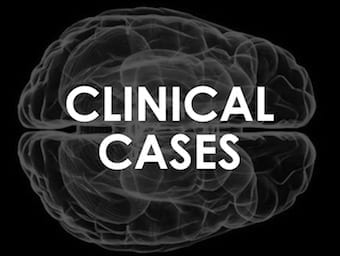
Brainstem lesions
4 more scenarios for Peter Gates Brainstem Rule of 4. Neurological lesion identification and neuro examination quiz

4 more scenarios for Peter Gates Brainstem Rule of 4. Neurological lesion identification and neuro examination quiz

You are asked to review a 65 year-old man who is comatose (GCS 3) with small pupils (2 mm bilaterally). He has a history of diabetes mellitus and bipolar disorder. He was discharged from hospital yesterday, following a surgical procedure.

Refractory shock in trauma is still most likely due to occult ongoing haemorrhage; shock may be due to the underlying cause of trauma e.g. MI leading to car crash

Apply ATLS/APLS protocol: primary survey to exclude life-threatening injuries, secondary survey, re-evaluation and definitive care.

Consider a 45 year-old HIV positive male with right hemiparesis and fluctuating conscious state. His CT head is shown below.

Cyanide is a potentially lethal toxic agent that can be found in liquid and gaseous form. First discovered in 1786 by Scheele, who extracted it from the dye Prussian blue - and promptly died from exposure to the vapours

Salicylate poisoning: mechanisms of toxicity: acid-base disturbance, uncoupling of oxidative phosphorylation, disordered glucose metabolism

Standardised Mortality Ratio SMR is the ratio of the observed or actual hospital mortality and the predicted hospital mortality for a specified time period.

Diaphragmatic Palsy: unilateral can be asymptomatic depending on patients underlying respiratory reserve; bilateral -> most mechanical ventilation dependent

Palmar erythema is a non-specific finding characterised by a redness of the palmar skin.

Obstruction of the superior vena cava results from mediastinal mass lesions. Features include a plethoric and cyanosed face with periorbital oedema, exophthalmos, conjunctival injection, and venous dilatation in the fundi, distended non-pulsatile neck veins and a positive Pemberton sign.

Clubbing is an abnormality of the fingertips with following features: beaked nails; loss of angle between nail bed and finger; increased AP width of finger tip; sponginess of proximal nail bed